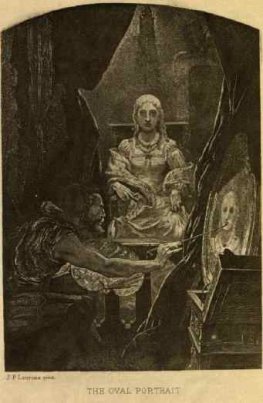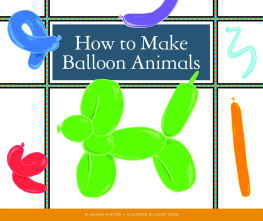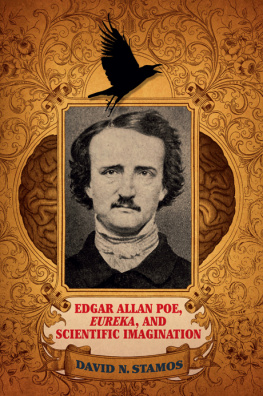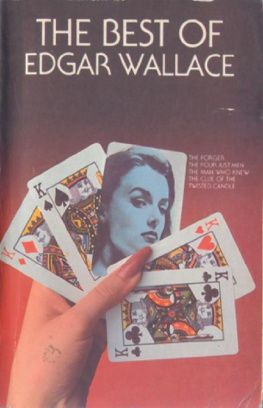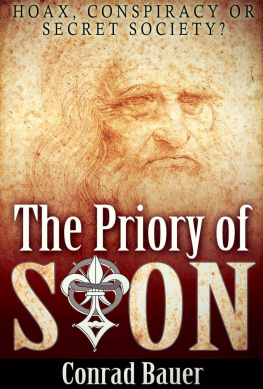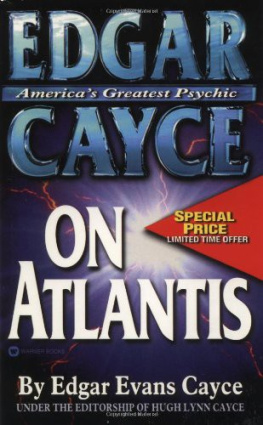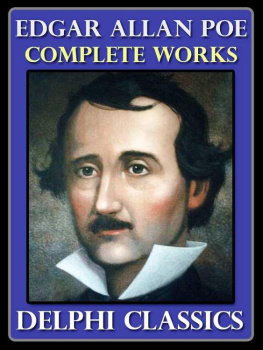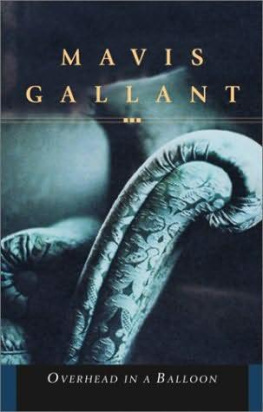Edgar Poe - The Balloon-Hoax
Here you can read online Edgar Poe - The Balloon-Hoax full text of the book (entire story) in english for free. Download pdf and epub, get meaning, cover and reviews about this ebook. genre: Prose. Description of the work, (preface) as well as reviews are available. Best literature library LitArk.com created for fans of good reading and offers a wide selection of genres:
Romance novel
Science fiction
Adventure
Detective
Science
History
Home and family
Prose
Art
Politics
Computer
Non-fiction
Religion
Business
Children
Humor
Choose a favorite category and find really read worthwhile books. Enjoy immersion in the world of imagination, feel the emotions of the characters or learn something new for yourself, make an fascinating discovery.

The Balloon-Hoax: summary, description and annotation
We offer to read an annotation, description, summary or preface (depends on what the author of the book "The Balloon-Hoax" wrote himself). If you haven't found the necessary information about the book — write in the comments, we will try to find it.
The Balloon-Hoax — read online for free the complete book (whole text) full work
Below is the text of the book, divided by pages. System saving the place of the last page read, allows you to conveniently read the book "The Balloon-Hoax" online for free, without having to search again every time where you left off. Put a bookmark, and you can go to the page where you finished reading at any time.
Font size:
Interval:
Bookmark:
The Balloon Hoax
byEdgar Allan Poe
ASTOUNDING NEWS BY EXPRESS, VIA NORFOLK!The Atlantic Crossed in Three Days!Signal Triumph of Mr. Monck Mason's Flying Machine!Arrival at Sullivan's Island, near Charlestown, S. C., of Mr. Mason, Mr. Robert Holland, Mr. Henson, Mr. Harrison Ainsworth, and four others, in the Steering Balloon, Victoria, after a Passage of Seventy-five Hours from Land to Land! Full Particulars of the Voyage!
The subjoined jeu d'esprit with the preceding heading in magnificent capitals, well interspersed with notes of admiration, was originally published, as matter of fact, in the New York Sun, a daily newspaper, and therein fully subserved the purpose of creating indigestible aliment for the quidnuncs during the few hours intervening between a couple of the Charleston mails. The rush for the "sole paper which had the news" was something beyond even the prodigious; and, in fact, if (as some assert) the Victoria did not absolutely accomplish the voyage recorded it will be difficult to assign a reason why she should not have accomplished it. E. A. P.
THE GREAT problem is at length solved! The air, as well as the earth and the ocean, has been subdued by science, and will become a common and convenient highway for mankind. The Atlantic has been actually crossed in a Balloon! and this too without difficultywithout any great apparent dangerwith thorough control of the machineand in the inconceivably brief period of seventy-five hours from shore to shore! By the energy of an agent at Charleston, S. C., we are enabled to be the first to furnish the public with a detailed account of this most extraordinary voyage, which was performed between Saturday, the 6th instant, at 11 A .M. and 2 P.M., on Tuesday, the 9th instant, by Sir Everard Bringhurst; Mr. Osborne, a nephew of Lord Bentinck's; Mr. Monck Mason and Mr. Robert Holland, the well-known aeronauts; Mr. Harrison Ainsworth, author of "Jack Sheppard," etc.; and Mr. Henson the projector of the late unsuccessful flying machinewith two seamen from Woolwichin all, eight persons. The particulars furnished below may be relied on as authentic and accurate in every respect, as, with a slight exception, they are copied verbatim from the joint diaries of Mr. Monck Mason and Mr. Harrison Ainsworth, to whose politeness our agent is also indebted for much verbal information respecting the balloon itself, its construction, and other matters of interest. The only alteration in the MS. received, has been made for the purpose of throwing the hurried account of our agent, Mr. Forsyth, into a connected and intelligible form.
THE BALLOON
Two very decided failures, of late,those of Mr. Henson and Sir George Cayley,had much weakened the public interest in the subject of aerial navigation. Mr. Henson's scheme (which at first was considered very feasible even by men of science) was founded upon the principle of an inclined plane, started from an eminence by an extrinsic force, applied and continued by the revolution of impinging vanes, in form and number resembling the vanes of a windmill. But, in all the experiments made with models at the Adelaide Gallery, it was found that the operation of these fins not only did not propel the machine, but actually impeded its flight. The only propelling force it ever exhibited, was the mere impetus acquired from the descent of the inclined plane, and this impetus carried the machine farther when the vanes were at rest, than when they were in motiona fact which sufficiently demonstrates their inutility, and in the absence of the propelling, which was also the sustaining power, the whole fabric would necessarily descend. This consideration led Sir George Cayley to think only of adapting a propeller to some machine having of itself an independent power of supportin a word, to a balloon; the idea, however, being novel, or original, with Sir George, only so far as regards the mode of its application to practice. He exhibited a model of his invention at the Polytechnic Institution. The propelling principle, or power, was here, also, applied to interrupted surfaces, or vanes, put in revolution. These vanes were four in number, but were found entirely ineffectual in moving the balloon, or in aiding its ascending power. The whole project was thus a complete failure.
It was at this juncture that Mr. Monck Mason (whose voyage from Dover to Weilburg in the balloon Nassau occasioned so much excitement in 1837) conceived the idea of employing the principle of the Archimedean screw for the purpose of propulsion through the airrightly attributing the failure of Mr. Henson's scheme, and of Sir George Cayley's to the interruption of surface in the independent vanes. He made the first public experiment at Willis's Rooms, but afterward removed his model to the Adelaide Gallery.
Like Sir George Cayley's balloon, his own was an ellipsoid. Its length was 13 feet 6 inchesheight, 6 feet 8 inches . It contained about 320 cubic feet of gas, which, if pure hydrogen, would support 21 pounds upon its first inflation, before the gas has time to deteriorate or escape. The weight of the whole machine and apparatus was 17 poundsleaving about 4 pounds to spare. Beneath the centre of the balloon, was a frame of light wood, about 9 feet long, and rigged on to the balloon itself with a net-work in the customary manner. From this framework was suspended a wicker basket or car.
The screw consists of an axis of hollow brass tube, 18 inches in length, through which, upon a semi-spiral inclined at 15 degrees, pass a series of steel-wire radii, 2 feet long, and thus projecting a foot on either side. These radii are connected at the outer extremities by 2 bands of flattened wire; the whole in this manner forming the framework of the screw, which is completed by a covering of oiled silk cut into gores, and tightened so as to present a tolerably uniform surface. At each end of its axis this screw is supported by pillars of hollow brass tube descending from the hoop. In the lower ends of these tubes are holes in which the pivots of the axis revolve. From the end of the axis which is next the car, proceeds a shaft of steel, connecting the screw with the pinion of a piece of spring machinery fixed in the car. By the operation of this spring, the screw is made to revolve with great rapidity, communicating a progressive motion to the whole. By means of the rudder, the machine was readily turned in any direction. The spring was of great power, compared with its dimensions, being capable of raising 45 pounds upon a barrel of 4 inches diameter, after the first turn, and gradually increasing as it was wound up. It weighed, altogether, eight pounds six ounces. The rudder was a light frame of cane covered with silk, shaped somewhat like a battledoor, and was about 3 feet long, and at the widest, one foot. Its weight was about 2 ounces . It could be turned flat, and directed upward or downward, as well as to the right or leftand thus enabled the aeronaut to transfer the resistance of the air which in an inclined position it must generate in its passage, to any side upon which he might desire to act; thus determining the balloon in the opposite direction.
This model (which, through want of time, we have necessarily described in an imperfect manner) was put in action at the Adelaide Gallery, where it accomplished a velocity of 5 miles per hour; although, strange to say, it excited very little interest in comparison with the previous complex machine of Mr. Hensonso resolute is the world to despise anything which carries with it an air of simplicity. To accomplish the great desideratum of aerial navigation, it was very generally supposed that some exceedingly complicated application must be made of some unusually profound principle in dynamics.
So well satisfied, however, was Mr. Mason of the ultimate success of his invention, that he determined to construct immediately, if possible, a balloon of sufficient capacity to test the question by a voyage of some extent; the original design being to cross the British Channel, as before, in the Nassau balloon. To carry out his views, he solicited and obtained the patronage of Sir Everard Bringhurst and Mr. Osborne, two gentlemen well known for scientific acquirement, and especially for the interest they have exhibited in the progress of aerostation. The project, at the desire of Mr. Osborne, was kept a profound secret from the publicthe only persons entrusted with the design being those actually engaged in the construction of the machine, which was built (under the superintendence of Mr. Mason, Mr. Holland, Sir Everard Bringhurst, and Mr. Osborne) at the seat of the latter gentleman near Penstruthal, in Wales. Mr. Henson, accompanied by his friend Mr. Ainsworth, was admitted to a private view of the balloon, on Saturday last; when the two gentlemen made final arrangements to be included in the adventure. We are not informed for what reason the two seamen were also included in the partybut in the course of a day or two, we shall put our readers in possession of the minutest particulars respecting this extraordinary voyage.
Font size:
Interval:
Bookmark:
Similar books «The Balloon-Hoax»
Look at similar books to The Balloon-Hoax. We have selected literature similar in name and meaning in the hope of providing readers with more options to find new, interesting, not yet read works.
Discussion, reviews of the book The Balloon-Hoax and just readers' own opinions. Leave your comments, write what you think about the work, its meaning or the main characters. Specify what exactly you liked and what you didn't like, and why you think so.



